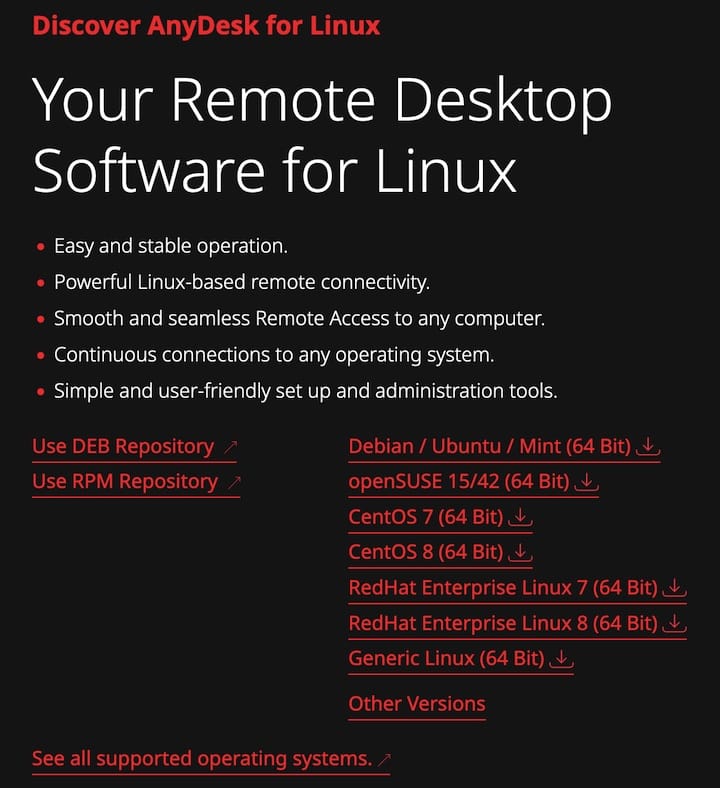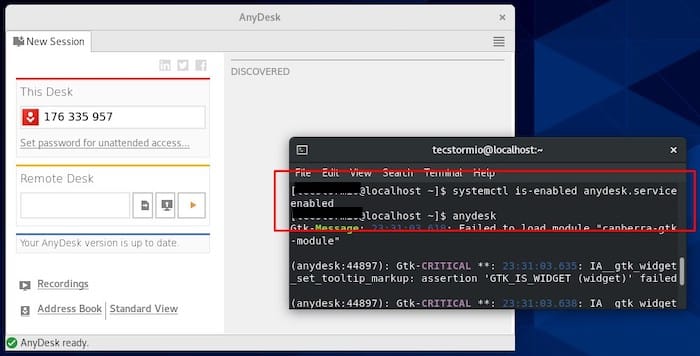How To Install AnyDesk on Fedora 41

In today’s digital landscape, remote desktop applications have become essential tools for both personal and professional use. One such application that stands out is AnyDesk, known for its speed, security, and user-friendly interface. This article will guide you through the process of installing AnyDesk on Fedora 41, ensuring that you can easily access your devices from anywhere in the world.
Understanding AnyDesk
What is AnyDesk?
AnyDesk is a remote desktop software that allows users to connect to computers and devices over the internet. It is widely used for remote support, online collaboration, and accessing files from different locations. With its robust performance and low latency, AnyDesk has gained popularity among professionals and casual users alike.
Key Features
- High Performance: AnyDesk offers a seamless experience with minimal lag, making it suitable for tasks requiring real-time interaction.
- Cross-Platform Compatibility: It works on various operating systems, including Windows, macOS, Linux, Android, and iOS.
- Security Features: AnyDesk employs advanced encryption standards to ensure secure connections between devices.
Prerequisites for Installation
Before diving into the installation process, it’s essential to ensure that your system meets the necessary requirements.
System Requirements
Your Fedora 41 system should meet the following minimum hardware specifications:
- Processor: 1 GHz or faster CPU
- RAM: At least 1 GB of RAM (2 GB recommended)
- Disk Space: Minimum of 500 MB free disk space
- Network: Stable internet connection for downloading packages and updates
User Permissions
You will need sudo or root access to install AnyDesk on your Fedora system. This access allows you to execute commands that modify system files and settings.
Internet Connectivity
A stable internet connection is crucial during installation to download necessary packages and updates from the repositories.
Methods to Install AnyDesk on Fedora 41
There are two primary methods to install AnyDesk on Fedora 41: using the Command Line Interface (CLI) or the Graphical User Interface (GUI). Both methods are straightforward and effective.
Method 1: Installing via Command Line Interface (CLI)
Installing AnyDesk via the command line is efficient and allows for quick execution of commands.
Step 1: Add AnyDesk Repository
The first step is to add the AnyDesk repository to your system. Open a terminal window and execute the following command:
sudo tee /etc/yum.repos.d/AnyDesk-Fedora.repo <<EOF
[anydesk]
name=AnyDesk Fedora - stable
baseurl=http://rpm.anydesk.com/centos/x86_64/
gpgcheck=0
repo_gpgcheck=0
gpgkey=https://keys.anydesk.com/repos/RPM-GPG-KEY
EOF
This command creates a new repository file specifically for AnyDesk, allowing your package manager to access its software packages.
Step 2: Update Package Cache
After adding the repository, update your package cache to ensure you have the latest information about available packages:
sudo dnf makecacheStep 3: Install AnyDesk
You can now install AnyDesk using the following command:
sudo dnf install anydeskThis command will download and install AnyDesk along with any required dependencies.
Step 4: Verify Installation
To confirm that AnyDesk has been successfully installed, run this command:
rpm -qi anydeskIf installed correctly, this command will display information about the AnyDesk package.
Step 5: Enable and Start AnyDesk Service
The final step is to enable and start the AnyDesk service so that it runs automatically on boot:
sudo systemctl enable anydesk.service
sudo systemctl start anydesk.serviceMethod 2: Installing via Graphical User Interface (GUI)
If you prefer a graphical approach, you can install AnyDesk using the Software Center.
Step 1: Download the RPM Package
The first step in this method is to download the RPM package directly from the official AnyDesk website. Navigate to AnyDesk’s Linux download page, select Fedora as your operating system, and click on the download link.

Step 2: Install Using Software Center
Once downloaded, open your file manager and navigate to your Downloads folder. Locate the downloaded RPM file, right-click on it, and select “Open With Software Install” or “Open With Gnome Software.” This action will launch your Software Center.
Step 3: Authenticate Installation
You may be prompted to enter your root password. This step is necessary to grant permission for installing software on your system.
Step 4: Launching AnyDesk
After installation completes, you can find AnyDesk in your applications menu. Click on it to launch the application. You are now ready to use AnyDesk for remote desktop access!

Troubleshooting Common Issues
Even with a straightforward installation process, users may encounter issues. Here are some common problems and their solutions.
Common Errors During Installation
- Error: Dependency Issues:
If you encounter dependency errors during installation, ensure that your system is fully updated by runningsudo dnf update. Then try reinstalling AnyDesk. - Error: Repository Not Found:
If you receive an error indicating that the repository cannot be found, double-check that you entered the repository details correctly in Step 1 of Method 1. - Error: GPG Key Issues:
If there are issues with GPG keys during installation, you may need to import the GPG key manually using:wget -qO - https://keys.anydesk.com/repos/RPM-GPG-KEY | sudo gpg --dearmor -o /etc/yum.repos.d/AnyDesk-GPG-KEY.gpg
Connection Issues with Wayland
If you are using Wayland as your display server (the default in many modern Fedora installations), you might experience connection issues with remote sessions. To resolve this:
- You can switch to X11 by logging out of your session and selecting “GNOME on Xorg” at the login screen.
- If switching is not an option, consider adjusting settings within AnyDesk or consult their support documentation for specific configurations related to Wayland.
Congratulations! You have successfully installed AnyDesk. Thanks for using this tutorial for installing the AnyDesk remote desktop software on Fedora 41 system. For additional help or useful information, we recommend you check the official AnyDesk website.